On View
In Pictures: See Inside the Louvre’s Extraordinary, Once-in-a-Lifetime Leonardo da Vinci Exhibition
With 160 works, this show will challenge your assumptions about the Renaissance master.
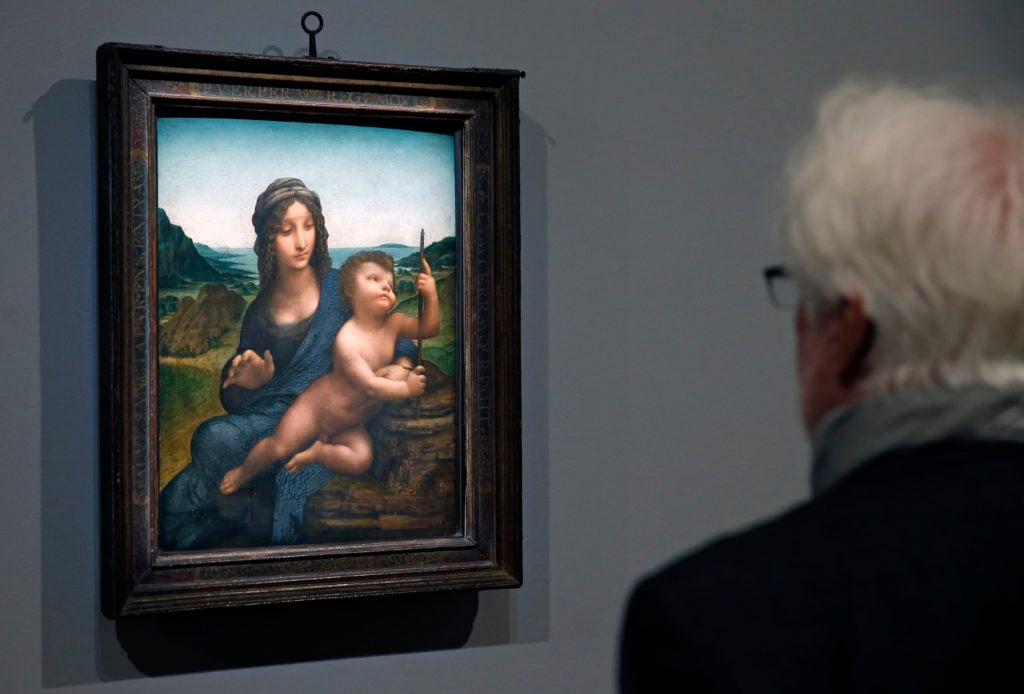
With 160 works, this show will challenge your assumptions about the Renaissance master.

Maxwell Williams

Though the famed Salvator Mundi painting—the most expensive artwork ever sold at auction—never made its way into the show, the Leonardo da Vinci exhibition at the Louvre has plenty to see.
The museum itself owns five paintings (The Virgin of the Rocks, La Belle Ferronnière, The Mona Lisa, The Saint John the Baptist, and The Saint Anne) and 22 drawings, which constitutes the largest collection of da Vinci works in the world.
“When we began our work we didn’t understand anything about Leonardo, because the bibliography is immense and, above all, it is contradictory,” said the show’s co-curator Louis Frank, discussing the research efforts his team undertook. “We had to start all over again to understand.”
The exhibition, which opened last month and runs through February 2020, will feature around 160 works in total, including six more paintings on loan, a plethora of drawings, and important pieces from da Vinci’s circle. And the show will include da Vinci’s first known artwork, a landscape drawing of the Arno River valley near Florence, on loan from the Uffizi. Also on view: a virtual-reality deep dive into the Mona Lisa (the original will remain in its usual spot at the Louvre, for reasons of crowd control).
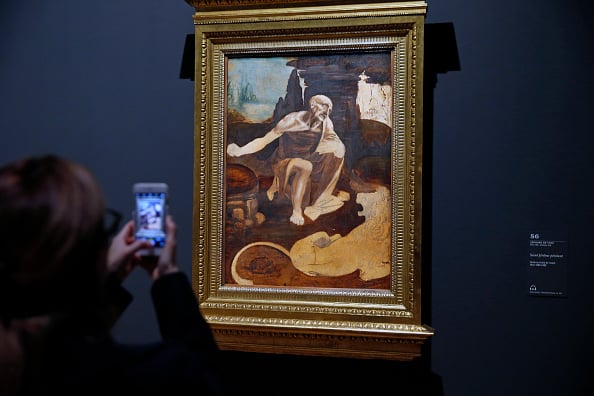
A visitor snaps a picture of da Vinci’s Saint Jerome Praying in the Wilderness at the Louvre. There are only 15 paintings attributed to the Italian Renaissance master, and the Louvre is showing 11 of them. Photo by Chesnot/Getty Images.
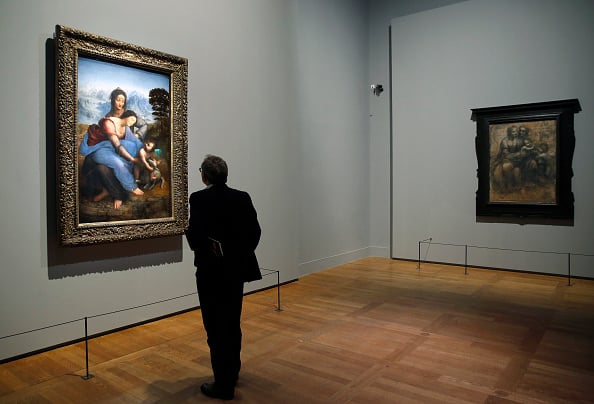
The painting Saint Anne, the Virgin, and the Child Playing with a Lamb a.k.a. The Saint Anne by Leonardo da Vinci at the Louvre. Photo by Chesnot/Getty Images.
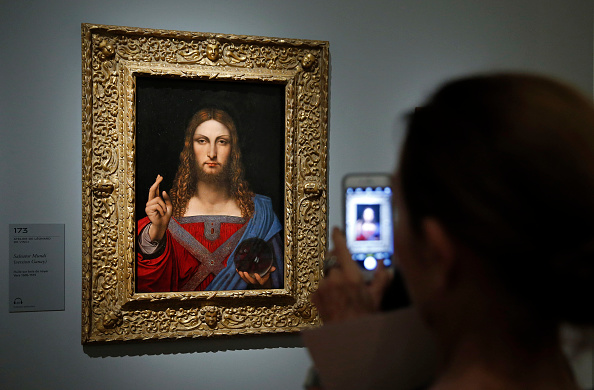
This Salvator Mundi—but not the most famous one—at the Louvre’s Leonardo da Vinci show. Photo by Chesnot/Getty Images.
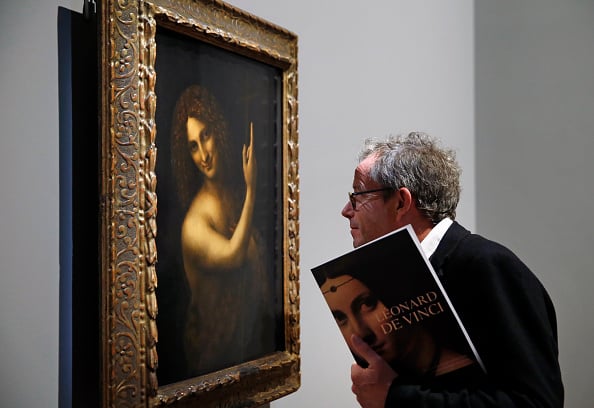
A visitor looks at Saint Jean Baptiste by Leonardo da Vinci on view at the Louvre. Photo by Chesnot/Getty Images.
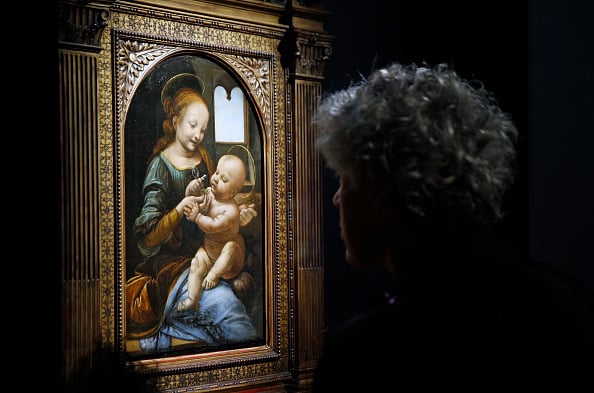
Leonardo da Vinci’s The Virgin and the Child a.k.a. Benois Madonna. For centuries, the painting was thought lost, until 1909, when architect Leon Benois announced he had found it in his father-in-law’s collection. Photo by Chesnot/Getty Images.
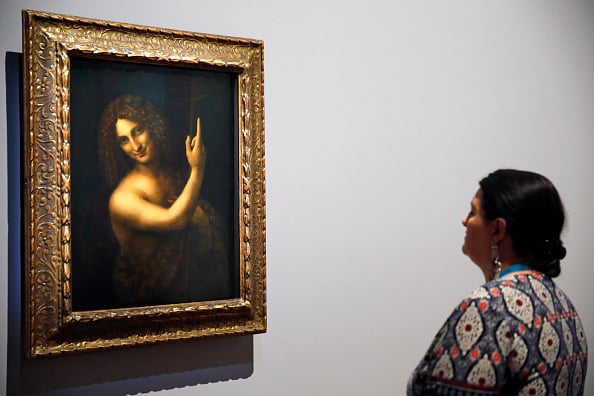
Saint John the Baptist is thought to be da Vinci’s final painting. Photo by Chesnot/Getty Images.
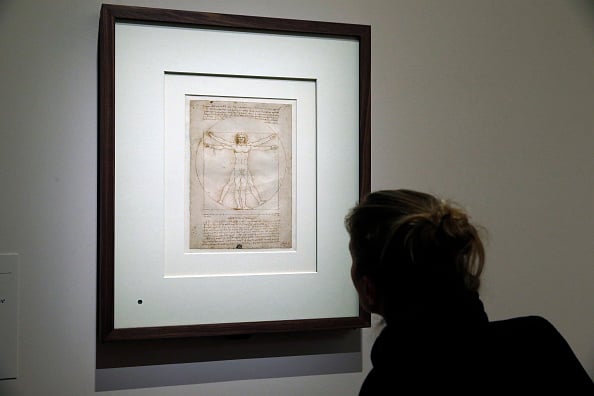
Vitruvian Man, da Vinci’s drawing of the human anatomy, is on loan from Venice’s Gallerie dell’Accademia, where it usually only goes on view for a few weeks at a time every six years. Photo by Chesnot/Getty Images.
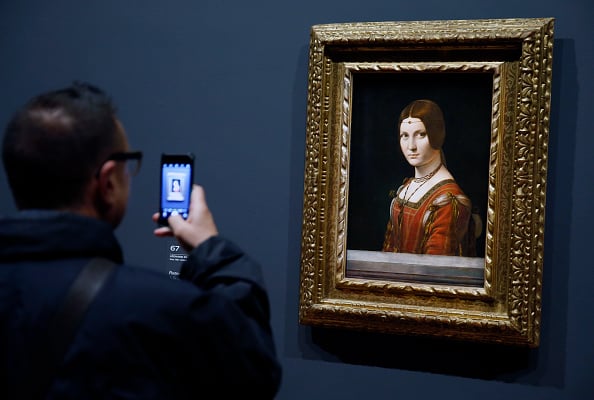
Portrait of an Unknown Woman is often known as La belle ferronnière is one of da Vinci’s most mysterious paintings; the model remains a complete mystery. Photo by Chesnot/Getty Images.
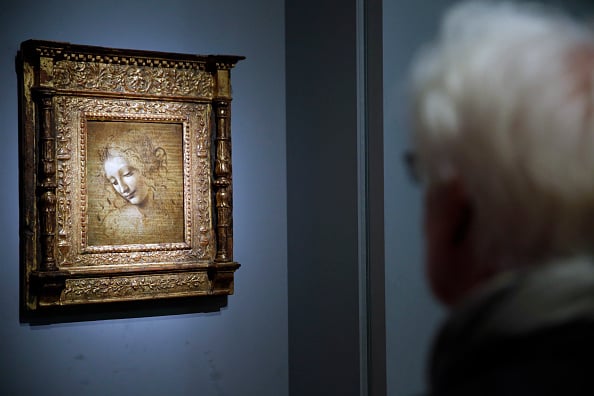
Da Vinci’s drawing Head of a Woman is better known by its nickname La Scapigliata, which loosely translates to “disheveled hair.” The Louvre has collected nearly 120 drawings by da Vinci for the exhibition. Photo by Chesnot/Getty Images.
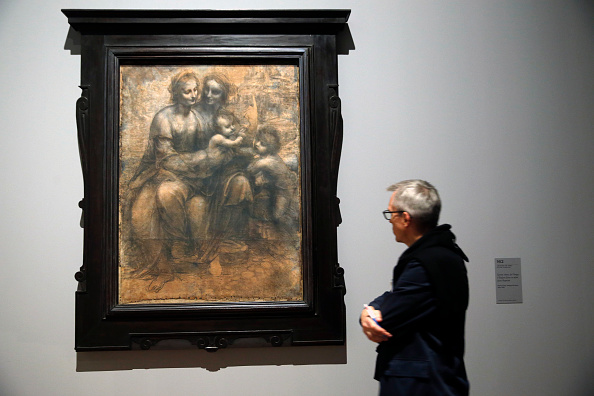
The large da Vinci drawing Saint Anne, The Virgin, the Child, and Saint John the Baptist is known as a “cartoon” (the term for a preparatory drawing in the Renaissance) for a painting that da Vinci supposedly never made, though he did make The Virgin and the Child with Saint Anne (sans John the Baptist), which is also on view at the Louvre. Photo by Chesnot/Getty Images.
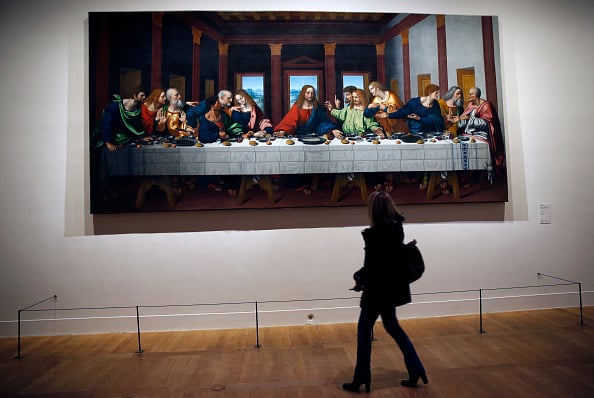
The da Vinci show also presents several paintings by Leonardo’s followers. For example, this painting is by Marco d’Oggiono, the master’s chief pupil. He copied many of Leonardo’s paintings, including The Last Supper. Photo by Chesnot/Getty Images.
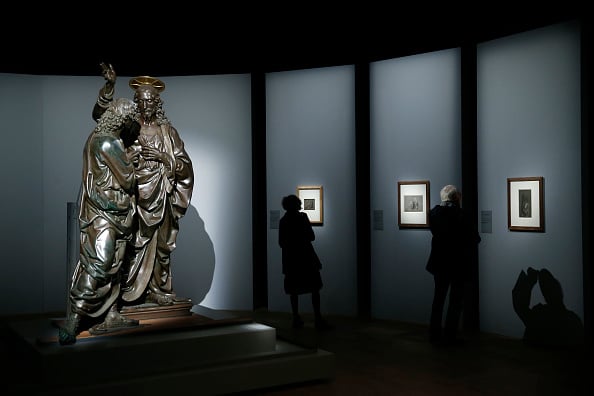
Also in the exhibition is this sculpture by Andrea del Verrocchio called Saint Thomas and the Christ. Del Verrocchio ran a workshop in Florence in the 15th century and was considered Leonardo’s teacher. Photo by Chesnot/Getty Images.
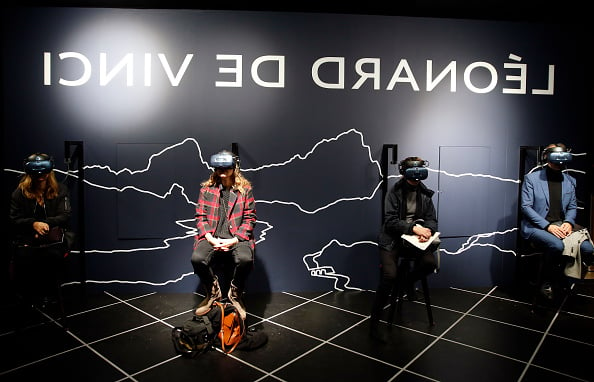
Visitors will have the opportunity to don HTC Vive VR headsets to take a virtual interactive dive into The Mona Lisa, which will remain in its normal location at the Louvre during the exhibition. Photo by Chesnot/Getty Images.